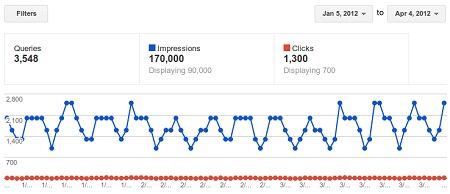 Over the passing week, Google has made some significant changes to one of the main analysis services any webmaster should have, Webmaster Tools, which also constitutes as a direct channel between the search engine and the webmaster. Some features has been removed while others have been added to the tool.
Over the passing week, Google has made some significant changes to one of the main analysis services any webmaster should have, Webmaster Tools, which also constitutes as a direct channel between the search engine and the webmaster. Some features has been removed while others have been added to the tool.
Let’s begin with the chopped off features. Google has announced that their spring cleaning, which its last round occurred two weeks ago, now also arrived to the Webmaster Tools as well. Although I’m sure some of you will be disappointed from the features that are going away, the truth is that they weren’t so useful anymore. Here are the axed features:
- Subscriber Stats- The feature that showed how many RSS/Atom feed subscriber the site has is going away. Honestly, this whole RSS market that once had a lot of demand is dying slowly and the Subscriber Stats were rarely in use. In any case, the data will still be available on Feedburner.
- Robots.txt Generator- The tool that can assist webmasters create their own robots.txt file, which indicates the search bots where in the site they can crawl and index, will be gone soon. This actually was a useful tool, but I guess that with today’s search technology the robots.txt file is not that important anymore.
- Site Performance- This tool offered nice visual historical data about how were the site’s speed performances through time and I have to admit that I was checking it from time to time. However, it had a lot of problems and on many times it was completely outdated. There are also better alternatives today, for example Google Analytics has better a Site Speed section.
Alright, not such a big loss in my opinion. So what data has been added? From now on, your Webmaster Tools account will provide much more search queries data than before. The reason it is pretty important is because ever since Google began encrypting its search referral traffic, some information can only be accessible only through Webmaster Tools.
The most important upgrade is that now, webmasters can go over search queries data of up to 90 days back which is a pretty significant jump from the 35 days that were available before. Another addition is that historical data will be accessible for webmasters right after they verify their site ownership (if the site existed before).
The last thing that been expanded is the top queries for 2,000, instead of 1,000 which is pretty awesome if you like to track more detailed trending queries of your site. Also, remember that back on January Google presented a new way it is calculating the search queries, so make sure you understand the data in front of you.
